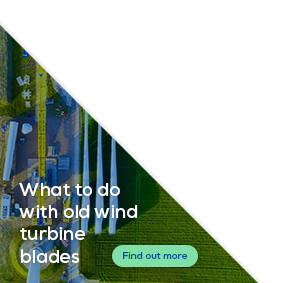Members' interviews
Interview with Bart Oberink and Ina Kamps, bp

5 June 2024

bp won two sites with a total of 4 GW of capacity in last year’s German offshore wind auctions. It was the first time bp has won in a German offshore wind auction. Where does Germany fit in your overall offshore wind strategy? (Bart Oberink, Vice-President for Offshore Wind, Continental Europe, bp)
Germany is a core market for bp. We’ve had a strong presence here for almost 120 years, including two refineries, a leading retail network with around 2,400 sites under the Aral brand, our growing Aral pulse ultra-fast charging network, as well as plans to import or produce lower carbon hydrogen. By the end of this decade, we’re aiming to invest up to €10 billion more in the country – our largest-ever investment programme in Germany – into the existing as well as lower carbon businesses.
The sites are significant – not only for our offshore wind business, but for all of bp as we transition to an integrated energy company. We’ve named the sites Oceanbeat East and Oceanbeat West in recognition of this – they symbolise the heartbeat and the start of our new offshore wind business in Germany.
We want to use the potential of the renewable power from these wind farms for further integration in our low-carbon hydrogen and biofuels production, electric mobility growth, our refinery decarbonisation as well as to enable wider industry decarbonisation in Germany. This is bp’s integrated energy strategy in action and just the start of what we hope to achieve in Europe.

The sites auctioned in this tender are not centrally pre-developed. How does this affect the project timeline? By when do you expect to reach final investment decision and to commission the projects? (Ina Kamps, Head of Offshore Wind, Germany, bp)
We’re already making progress with these sites, successfully conducting site investigations and the first aerial and vessel-based surveys for ground, wind and water observation, as well as resting birds and marine mammals in the project areas.
Upcoming surveys include the deployment of passive acoustic devices to monitor the habitat distribution of marine mammals, vessel-based radar observations of migratory birds and the investigations on benthic organisms.
The milestones and obligations under German regulation are very clear and incentivise timely project realisation. These, together with ongoing geophysical and geotechnical campaigns are putting us on track for an anticipated FID around 2027, aligned with grid connection dates in 2030.
bp is committed to paying several billion in fees for the right to build these two wind farms. That’s because the German auction design used uncapped negative bidding. What is your strategy to recover these additional costs? How are you planning to use the electricity from offshore wind? (Bart Oberink)
We make our investment decisions in line with our capital frame and we expect any renewables project to achieve stringent hurdle rates. We believe we can develop these sites at a lower cost versus purchasing third-party renewable power via PPAs, by retaining optimisation and commercialisation margins.
Our renewables investments, including our German offshore wind projects, are focused on opportunities where we can create integration value and enhance returns. This may include
integration with low-carbon hydrogen and biofuels production, refinery decarbonisation, as well as through enabling wider industry decarbonisation in Germany.
While this auction used a negative bidding model, it was a competitive process. The auction mechanism via incremental bid rounds meant each winning bid was only €15m to €30m higher per GW than a competitor. bp will pay 10% of the total fees upfront, the remainder paid over 20 years once the wind farm is in operation. The present value of the total payable fees is therefore lower.
It’s important to bp that auction design enables sustainable, value-accretive investments across the value chain. Uncapped negative bidding without boundary conditions should not be aimed at maximising profits to regulators but at strengthening investments in grids, ports, supply chain, ecology and innovation, ensuring the offshore wind industry can continue to contribute to the energy transition.
Organisations like WindEurope have never been more important; it is critical that we as an industry, together with Governments and other stakeholders, collaborate in order to overcome the challenges facing the sector. That’s why we’re actively contributing to WindEurope through working group representation, and also why I’m standing for election to the Board in this month’s elections. The industry is at an inflection point, and as we look to the future, we want to play our part supporting the decarbonisation of Europe’s energy system.

